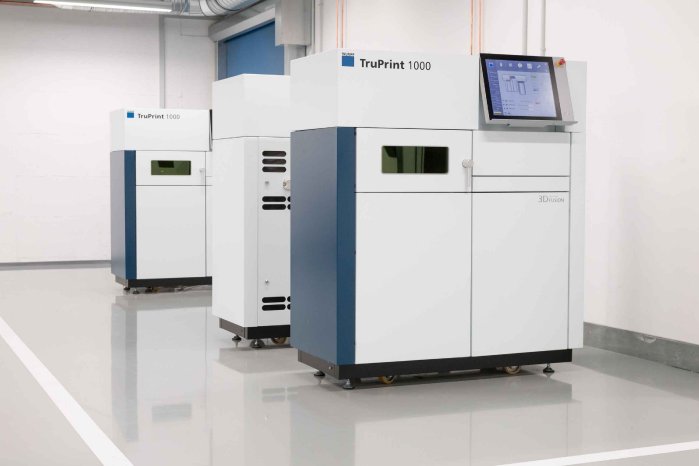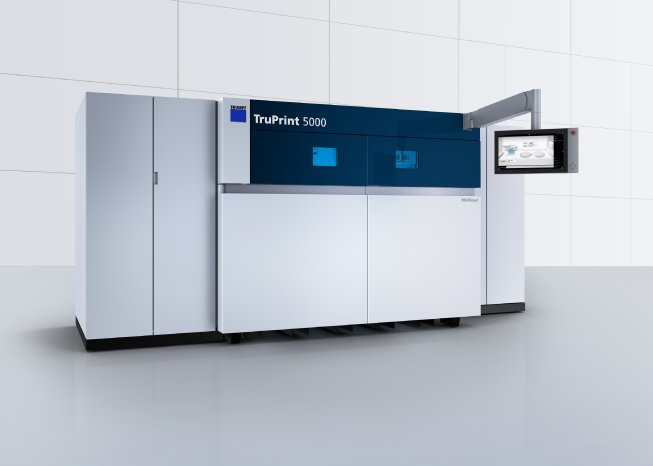TruPrint 1000 with TruDisk 1020 – green disk laser for processing pure copper and copper alloys
TRUMPF is an expert in lasers and laser metal fusion (LMF) and combines the green beam source with a special-purpose TruPrint 1000 machine. Compared to IR lasers, which have a wavelength of 1,030 nm, the “green” laser has a wavelength of 515 nm. This machine is able to reliably process precious metals, copper and copper alloys. It can also additively process pure copper. At toolcraft, CuCr1Zr is initially being used. The electrical conductivity and induction performance of the 3D-printed components are comparable to those of conventionally manufactured parts.
TruPrint 5000 – multi-laser and heated build plate for high-end precision parts
The TruPrint 5000 works with three 500 W fibre lasers and has a build area of 300 mm in diameter and 400 mm in height. The machine’s multiple lasers are able to scan the entire build area simultaneously. This means that the lasers can be flexibly allocated, the build rates are high and the components have an optimal surface quality without any seam marks. “The heated build plate is an innovative feature. It can be heated as high as 500°C, which improves component quality,” says Christoph Hauck, who as a managing director of toolcraft is chiefly responsible for new technologies and new markets. The new machine also features the industrial part and powder management typical of TRUMPF solutions. The interchangeable cylinder principle reduces setup times, boosts productivity and machine utilisation rate and ensures a clean, powder-free production cycle. Simultaneous production, powder and parts processes also save time. Production is further optimised thanks to the system’s intelligent monitoring solutions and consistent software.
TruLaser Cell 3000 – LMD technology as the ideal complement to the powder bed process
Laser metal deposition (LMD) can be used to rework and repair worn or damaged parts. By applying functional coatings, this method provides effective protection against abrasion and corrosion. It is even capable of constructing complex geometries on uneven surfaces. The component is heated using a laser beam. This creates a local weld pool into which metal powder is added via a nozzle, allowing the part to be optimally connected to the existing material. It is possible to change between different materials during the work process. The TruLaser Cell 3000 guarantees high build rates and its special design features an integrated line scanner and an EHLA-enabled rotary axis. Researchers from Fraunhofer ILT and RWTH Aachen University have developed the extreme high-speed laser deposition welding (EHLA) method. EHLA is an economical and resource efficient process, which is also environmentally friendly thanks to its use of a chromium VI-free coating. Even class 1 aerospace components have already been repaired using the LMD technology. “With this investment, toolcraft has the future of additive manufacturing firmly in its sights,” concludes Hauck.





